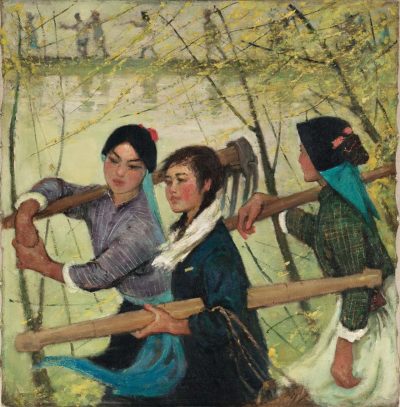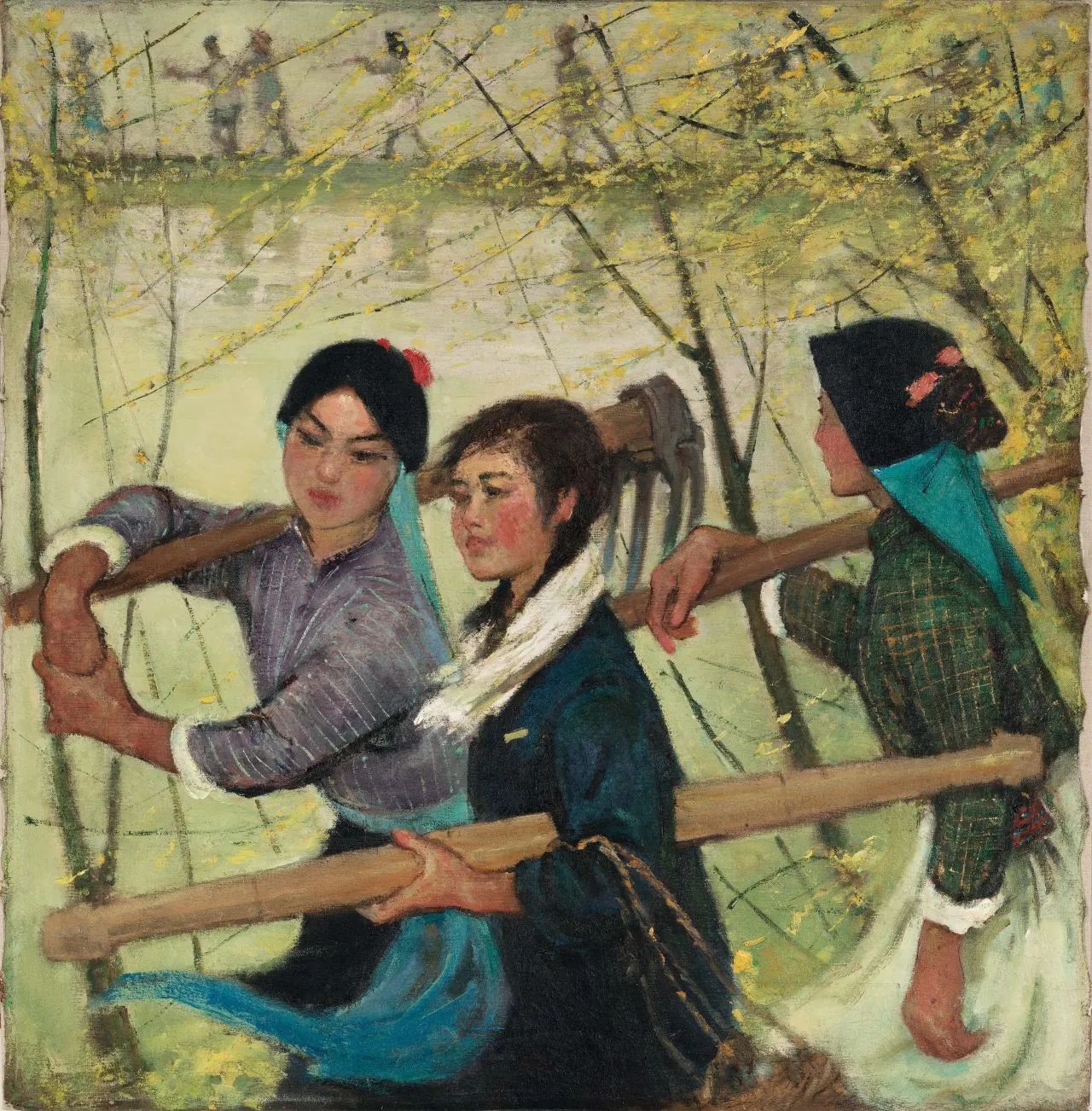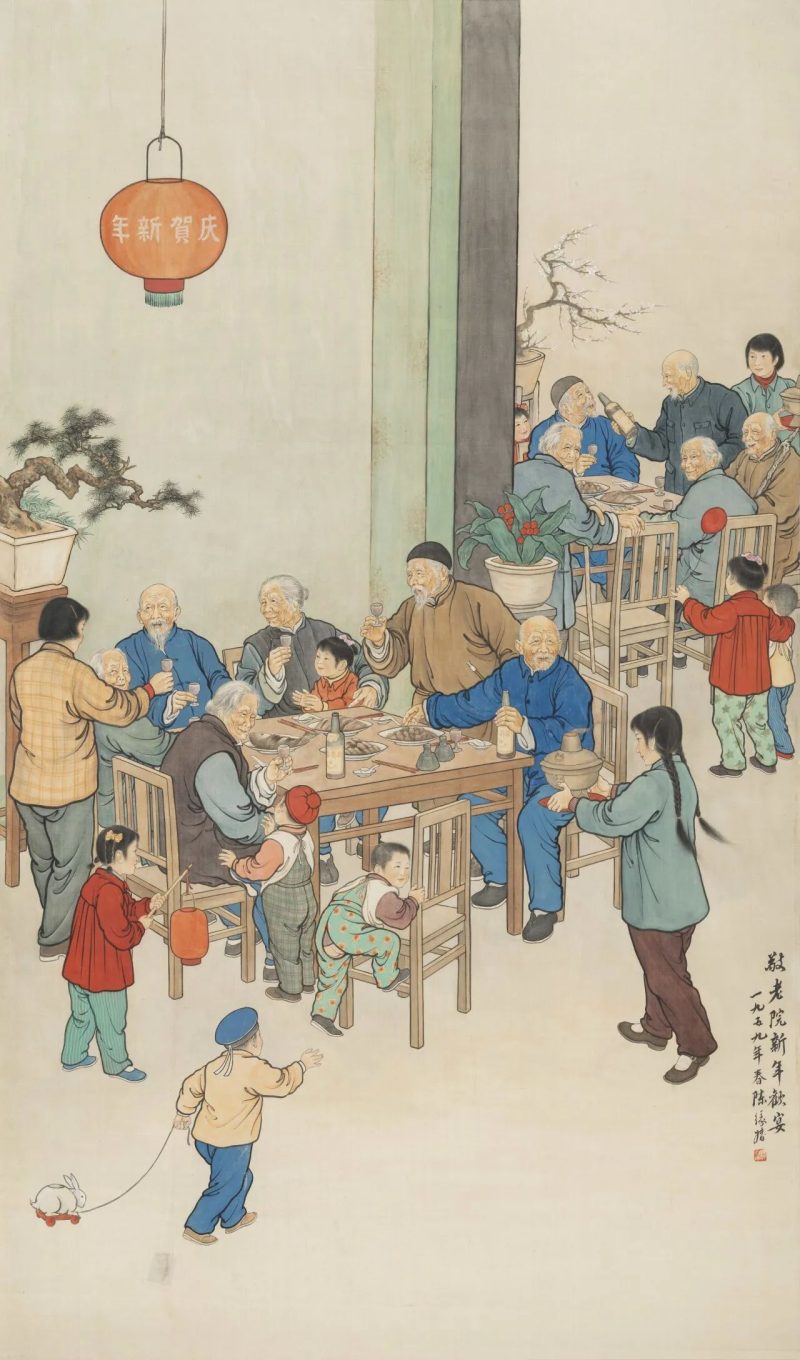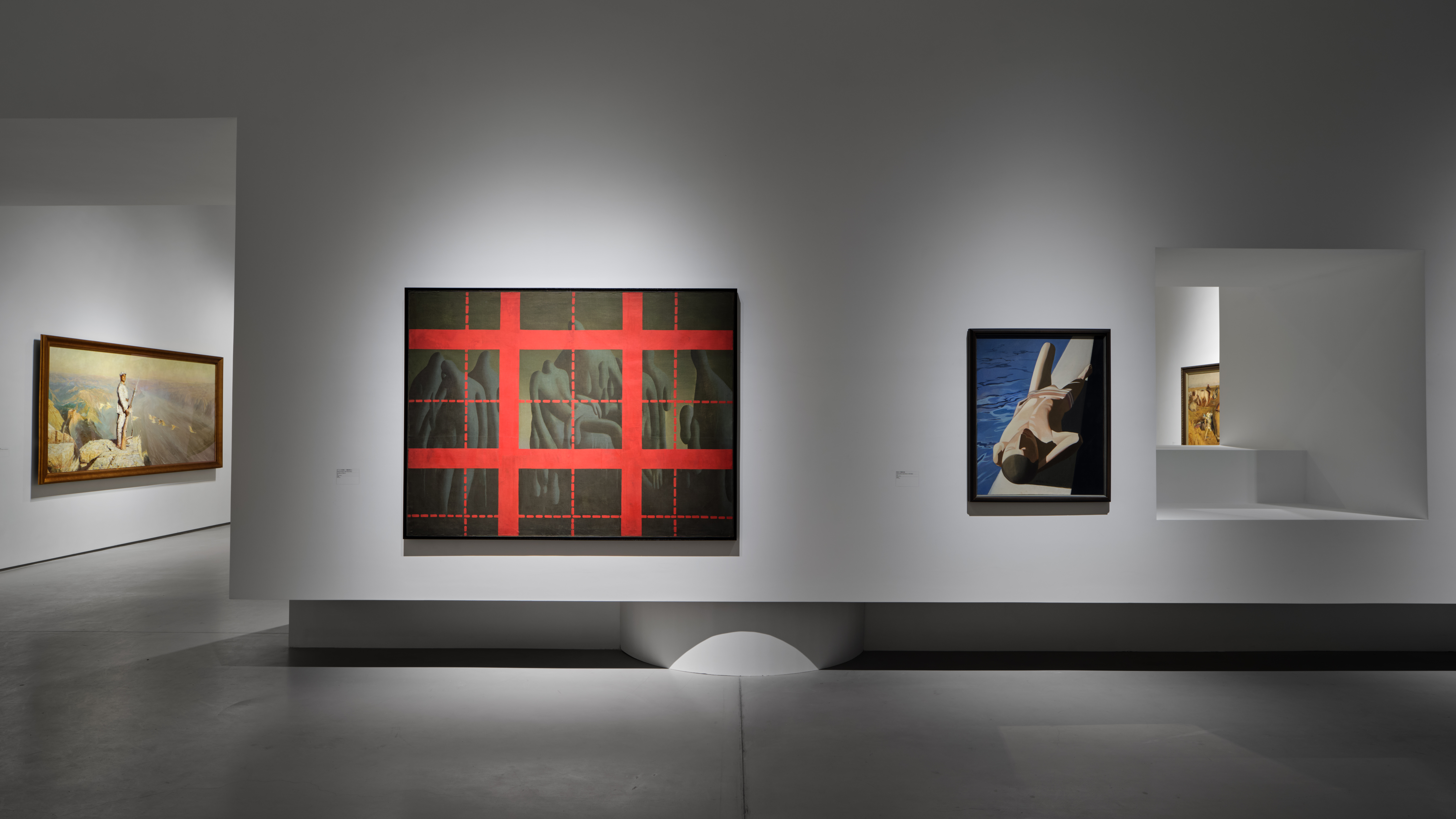
Su Tianci
Spring Breeze, Multitude of Willow Trees
1960
Oil on canvas
Su Tianci’s Spring Breeze, Multitude of Willow Trees was made in Wuxi, Jiangsu in 1960. The title of this work was inspired by the first sentence of Mao Zedong’s poem Farewell To The God of Plague, which reads “Willow tendrils wave in spring breeze in milliards / Six hundred million Chinese wise as the ancient Yao and Shun”. The spring breeze brushes willow leaves aside to reveal an educated city girl sent to work in the countryside. The atmosphere is poetic, as the girl holds the tools of her labor and the willow tree sways in the wind. Shaping her form, Su Tianci emphasizes the sidelines of the body, and outlines the contours of her face, arms and hands in a clear and simple way. Su uses color to bring her body’s structure and movement to the viewer’s attention, rather than drawing their eye to the meticulous details. Su’s unhurried, assiduous illustration works in perfect harmony with the earnest youthfulness of his subject. The girl is more gentle and less passionate, and the spring breeze highlights the quality of freshness. Western realism traditions and powerfully evocative subjects are finally integrated in an atmosphere of poetic and oriental aesthetics.
As a proud disciple of Lin Fengmian, Lin’s artistic philosophy to “observe nature and enter the painting with the heart of a child” and his research on the blending of Eastern and Western cultures both had a tremendous influence on Su. Spring Breeze, Multitude of Willow Trees is an attempt to combine Chinese painting and Western realistic painting with the demands of the times. His effort to bring together seasonal, ethnic, and temporal motifs was highly controversial at the time and widely criticized as a bourgeois sentiment. Su Tianci had trouble exploring his own artistic path within the political and cultural framework of the time, and eventually returned to depicting natural scenery.
(Edited by Lijie Wang & Miao Zijin, 2019)




